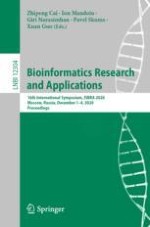2020 | Buch
Bioinformatics Research and Applications
16th International Symposium, ISBRA 2020, Moscow, Russia, December 1–4, 2020, Proceedings
herausgegeben von: Dr. Zhipeng Cai, Prof. Ion Mandoiu, Giri Narasimhan, Pavel Skums, Xuan Guo
Verlag: Springer International Publishing
Buchreihe : Lecture Notes in Computer Science
